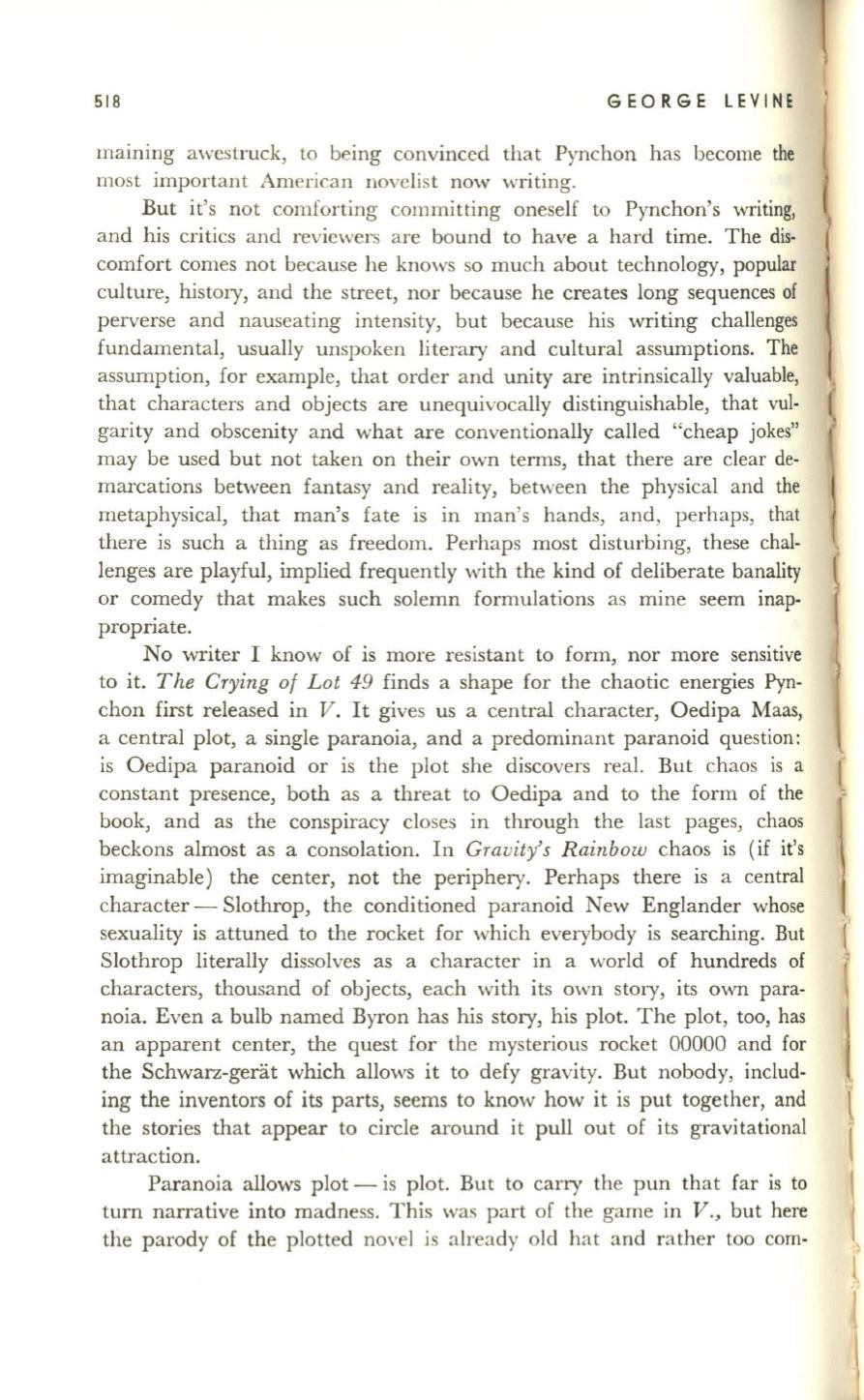
518
GEORGE LEVINE
maining awestruck, to being convinced that Pynchon has become the
most important American novelist now writing.
But it's not comforting committing oneself to Pynchon's writing,
and his critics and reviewers are bound to have a hard time. The dis·
comfort comes not because he knows so much about technology, popular
culture, history, and the street, nor because he creates long sequences of
perverse and nauseating intensity, but because his writing challenges
fundamental, usually unspoken literary and cultural assumptions. The
assumption, for example, that order and unity are intrinsically valuable,
that characters and objects are unequivocally distinguishable, that vul·
garity and obscenity and what are conventionally called "cheap jokes"
may be used but not taken on their own terms, that there are clear de·
marcations between fantasy and reality, between the physical and the
metaphysical, that man's fate is in man's hands, and , perhaps, that
there is such a thing as freedom. Perhaps most disturbing, these chal·
lenges are playful, implied frequently with the kind of deliberate banality
or comedy that makes such solemn formulations as mine seem inap.
propriate.
No writer I know of is more resistant to form, nor more sensitive
to it.
The Crying of Lot
49 finds a shape for the chaotic energies Pyn–
chon first released in
V.
It gives us a central character, Oedipa Maas,
a central plot, a single paranoia, and a predominant paranoid question:
is Oedipa paranoid or is the plot she discovers real. But chaos is a
constant presence, both as a threat to Oedipa and to the form of the
book, and as the conspiracy closes in through the last pages, chaos
beckons almost as a consolation. In
Gravity's Rainbow
chaos is (if it's
imaginable) the center, not the periphery. Perhaps there is a central
character - Slothrop, the conditioned paranoid New Englander whose
sexuality is attuned to the rocket for which everybody is searching. But
Slothrop literally dissolves as a character in a world of hundreds of
characters, thousand of objects, each with its own stOlY, its own para–
noia. Even a bulb named Byron has his story, his plot. The plot, too, has
an apparent center, the quest for the mysterious rocket 00000 and for
the Schwarz-gerat which allows it to defy gravity. But nobody, includ–
ing the inventors of its parts, seems to know how it is put together, and
the stories that appear to circle around it pull out of its gravitational
attraction.
Paranoia allows plot - is plot. But to carry the pun that far is to
turn narrative into madness. This was part of the game in
V.,
but here
the parody of the plotted novel is already old hat and rather too com-
l
\
I
(


